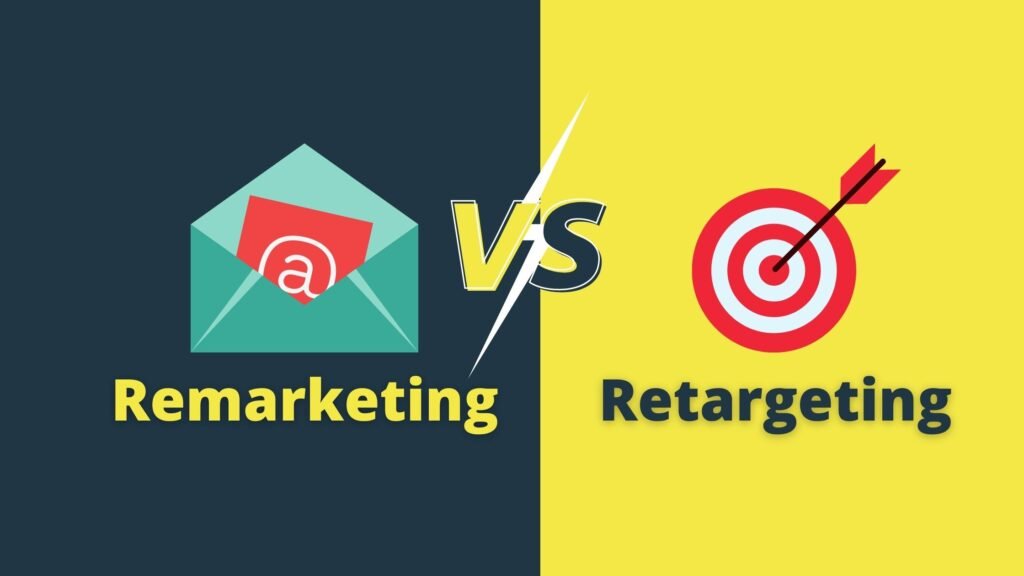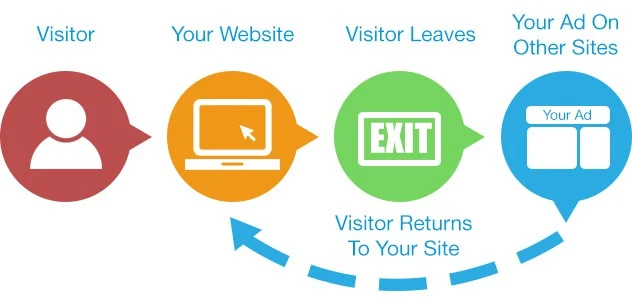In the realm of digital marketing, businesses frequently confuse retargeting and remarketing, using them as synonyms. Nevertheless, they are separate approaches with individual uses. Grasping the distinction between retargeting and remarketing can assist you in optimizing conversions and effectively re-engaging prospective customers. This comprehensive guide will examine the distinguishing features of these strategies and will focus on the comparison between retargeting vs remarketing, their synergy with SEO, their diverse applications, and practical illustrations.

What is the Difference Between Retargeting vs Remarketing?
Marketers aiming to optimize customer re-engagement often engage in discussions about retargeting vs remarketing. While they are alike, these tactics function in distinct ways:
- Retargeting mainly uses paid advertisements to re-establish contact with users who have previously been on a website but did not perform an action (like making a purchase or submitting a form). This is typically accomplished via display advertisements on Google, Facebook, Instagram, and various other advertising networks.
- Remarketing concentrates on personalized messaging and email marketing, targeting users who have previously interacted with a business, such as past customers or subscribers to its emails.
Key Differences:
- Marketing Channel – Retargeting works via display ads and paid campaigns, while remarketing is mainly email-based.
- Audience Targeting – Retargeting targets potential customers who have shown interest but haven’t converted, while remarketing focuses on existing customers to encourage repeat purchases.
- Goal – Retargeting aims to convert undecided visitors, while remarketing nurtures relationships with past buyers.
Is Retargeting Part of SEO?
Although retargeting and remarketing strategies are essential elements of digital marketing, retargeting itself does not directly pertain to SEO. SEO (Search Engine Optimization) aims to enhance organic traffic by fine-tuning website content, boosting rankings, and improving the user experience. Nonetheless, retargeting enhances SEO efforts in various ways:
How Retargeting Supports SEO:
- Keeps Visitors Engaged – While SEO attracts users to a site, retargeting guarantees their return if they exit without converting.
- Enhances conversion rates – Users who find your site organically but don’t take immediate action can be re-engaged through retargeting ads.
- Reduces Bounce Rates – By prompting users to come back, retargeting lowers bounce rates and enhances user engagement.
- Enhances Brand Awareness – Users are more inclined to convert due to repeated exposure from retargeting, which strengthens brand recognition.

Retargeting vs Remarketing Use Cases
Retargeting vs remarketing have distinct objectives, and companies utilize them in diverse manners to improve customer interaction. Let us examine their primary applications:
Retargeting Use Cases:
- Abandoned Cart Recovery – Numerous shoppers explore products and place them in their carts, yet exit without finalizing the purchase. Retargeting involves reminding them of pertinent advertisements, which boosts conversion rates.
- Lead Nurturing – When users visit a site, interact with blog posts, or obtain a lead magnet but do not proceed further, retargeting ads can help direct them down the sales funnel.
- Event Promotion – Companies that organize webinars, workshops, or conferences can retarget individuals who have attended in the past or shown interest but did not register.
- Upselling and Cross-Selling – Businesses can retarget their existing customer base with advertisements for complementary products or premium upgrades.
- Competitor Targeting – Retargeting can also target visitors who previously engaged with a competitor’s website but haven’t decided yet.
Remarketing Use Cases:
- Customer Re-engagement – Companies utilize remarketing emails to re-establish connections with previous customers, keeping them informed about new products, updates, or exclusive promotions.
- Subscription Renewals – Businesses that provide subscription-based services can send automated emails to remind users of upcoming renewals.
- Loyalty and Reward Programs – Brands employ remarketing to maintain customer involvement with loyalty initiatives and tailored promotions.
- Post-Purchase Engagement – Sending follow-up emails with usage tips, tutorials, or recommendations based on previous purchases enhances customer satisfaction and retention.
- Win-Back Campaigns – Companies can reconnect with inactive customers through targeted email campaigns that provide special discounts or incentives.

What is an Example of Retargeting vs Remarketing?
A typical instance of retargeting occurs when you go to an online shop, look at an item, and exit without buying it. Later, as you scroll through Instagram or browse other sites, you come across an advertisement for the same product, sometimes featuring a special discount or free shipping. Google Ads retargeting, Facebook Pixel tracking, or similar advertising tools are used to achieve this, making sure the brand stays top of mind.
Retargeting in Practice:
- E-commerce Illustration – A customer browses an online apparel shop and checks out sneakers but makes no purchase. Subsequently, they see the exact same sneakers on a Facebook or Google Display ad with a “10% Off – Limited Time” promotion.
- SaaS Example –A prospective client registers for a software tool’s free trial but fails to switch to the paid plan. Retargeting ads bring to their attention the advantages of the premium plan and present a special discount.
- B2B Example – A business executive accesses a whitepaper from a B2B marketing agency’s site but does not seek additional information. Retargeting ads serve as reminders of the agency’s services, prompting them to schedule a consultation.
What is an Example of Remarketing?
A case of remarketing is when an e-commerce shop sends you a message reminding you of products you’ve left in your shopping cart. The email might contain a discount offer or an incentive such as “Limited stock left! Purchase now. This approach cultivates leads and promotes conversions via direct interaction.
Remarketing in Action:
- E-commerce example – After a customer purchases a skincare item, they receive an email a few weeks later suggesting complementary products or reminding them to replenish their purchase.
- SaaS Example – A SaaS provider emails users on a free trial with case studies and testimonials to motivate them to switch to a paid plan.
- Hospitality Example – A hotel brand sends emails to former guests, offering them exclusive deals for their next stay, tailored to their past booking history.
- Example from the fitness industry- A gym sends tailored emails to members who haven’t come in for some time, providing them with a complimentary personal training session as a way to reconnect.
.

Conclusion
It is essential for companies that want to enhance customer engagement to grasp the difference between retargeting vs remarketing. Although both approaches concentrate on re-engaging potential and current customers, the way they are carried out differs: Retargeting employs paid advertisements to reestablish contact with individuals who visited the website and motivate them to convert.
Email campaigns are the backbone of remarketing, helping to cultivate leads, keep customers, and generate repeat purchases. Integrating retargeting and remarketing into your digital marketing strategy helps to ensure that potential customers don’t get away, ultimately boosting sales and growth for your business. By employing Google Ads retargeting, Facebook Pixel tracking, and well-planned email marketing, you can greatly improve your customer retention and conversion rates.
Having learned the difference between retargeting and remarketing, which of the two strategies do you believe aligns best with your business objectives? Tell us in the comments!